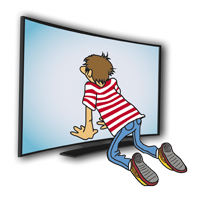Author: Águeda Delgado-Ponce – Translation: Erika-Lucia Gonzalez-Carrion
Today’s society, as a consequence of technological expansion, has become an eminently visual society. And within this visual communication, the use of images of all kinds stands out over the verbal.
However, and although tables and figures clarify and help us understand complex notions, the written text is the backbone of the information and in scientific articles this is still the primary code of communication. So the text, in no case, should be subject to the visual elements.
Likewise, the profusion of tables and figures will not guarantee a good job, on the contrary, an excess of these elements will harm the article, among other reasons because:
- They fragment the reading of the article.
- Abusing of these elements instead of clarifying certain information can obscure the text making it difficult to understand.
- If not used properly, there may be redundancy, since many times these visual elements repeat the information that appears in the text.

Therefore, when preparing our manuscript to present to a scientific journal, we must not only take into account the characteristics and limits of images imposed by its regulations, but we must also be guided by the coherence of these elements and their importance for understanding the data. In this sense, we will use the visual elements whenever:
- There are data that require to be seen by the reader instead of presented as text.
- The data cannot be easily explained in the text and need to be presented or compared using a table.
- Complement the text and do not repeat it.
In addition, we must take into account, as a relevant aspect, the choice of medium, that is, tables or figures, which will depend on the information that needs to be presented visually. So:
- Tables are an effective and concise way to present large amounts of data.
- The figures -denomination under which we find all the other visual elements that are not tables: illustrations, infographics, photographs, line or bar graphs, flow charts, drawings, maps, etc.- in some cases (images, photographs, illustrations, infographics …), help readers to visualize the information that is intended to be transmitted when words are insufficient or imprecise for a scientific article; while in others, they transmit large amounts of data and can show a statistical or functional relationship between the different elements (graphics); or they serve to explain a process (flow diagrams).
In this way, we will achieve an efficient transmission of information, taking advantage of the advantages of each language and avoiding contradictions and redundancy.
